The first night after tooth extraction plays a pivotal role in how smoothly and quickly you heal. Whether you had a wisdom tooth removed or a simple extraction, how you handle the first 24 hours can make a major difference in preventing complications such as infection, swelling, or dry socket.
In this comprehensive guide, we’ll explore what to eat, how to sleep, how to manage bleeding and pain, and what to avoid, all supported by insights from reputable sources like the American Dental Association (ADA), Mayo Clinic, and WebMD.
- What to Expect After Tooth Extraction
- Controlling Bleeding the First Night
- First Night After Tooth Extraction: What to Eat
- How to Sleep First Night After Tooth Extraction
- Managing Pain and Swelling
- What Not to Do the First Night
- Cleaning and Oral Hygiene Tips
- Signs of Complications to Watch For
- First-Night Recovery Checklist
- Expert Insights
- Natural Remedies That May Support Healing
- What to Expect in the Days Ahead
- Frequently Asked Questions
- Final Thoughts
🩸 What to Expect After Tooth Extraction
After a dental extraction, your body begins the healing process immediately by forming a blood clot at the extraction site. This clot is vital—it protects the nerve endings and bones underneath and provides the foundation for healing.
However, the first night after tooth extraction bleeding, pain, and swelling can make patients unsure of what’s normal or safe.
🛑 Controlling Bleeding the First Night
Bleeding is common during the first few hours. Most patients experience mild to moderate oozing, which usually slows significantly after 3–4 hours post-surgery.
Here’s what to do:
- Apply Pressure with Gauze: Bite down gently but firmly on sterile gauze for 20–30 minutes. Replace if necessary.
- Use a Tea Bag: If bleeding persists, use a damp black tea bag (not herbal). The tannic acid promotes clotting.
- Stay Upright: Lying flat can increase blood flow to the head and prolong bleeding. Sit upright or keep your head elevated while resting.
💡 Pro Tip: Avoid talking or chewing excessively the first evening—it can disturb the clot and increase bleeding.
If heavy bleeding continues after 24 hours, contact your dentist immediately.
🍽️ First Night After Tooth Extraction: What to Eat
Nutrition plays a big role in your recovery. But the type and texture of food you choose can help or hurt your healing process.
✅ Safe Foods for the First Night
Stick to cool, soft, and nutrient-rich options like:
- Applesauce
- Yogurt (without fruit chunks)
- Smoothies (without straws)
- Mashed potatoes
- Oatmeal (cooled)
- Creamy soups or broths
- Scrambled eggs
- Ice cream or frozen yogurt (in moderation)
These foods are gentle on your gums, easy to swallow, and help maintain energy without irritating the surgical site.
❌ Foods to Avoid
- Crunchy or hard items (chips, nuts, popcorn)
- Spicy or acidic foods (tomatoes, citrus)
- Chewy foods (steak, tough bread)
- Hot beverages or soup
- Carbonated or alcoholic drinks
- Using straws (this can dislodge the clot and lead to dry socket)
⚠️ Important: Avoid all solid or warm foods during the first 24 hours. Cool and soft is the rule.
💤 How to Sleep First Night After Tooth Extraction
Getting quality sleep may be difficult after dental surgery due to discomfort, but your sleep position can influence healing.
🛏️ Best Practices for Sleeping:
- Elevate your head: Use two or more pillows to prop your head at a 45-degree angle. This reduces swelling and helps prevent excess bleeding.
- Sleep on your back: Sleeping on your side—especially on the side of the extraction—may cause unnecessary pressure and disrupt the clot.
- Protect your pillow: Use a towel or old pillowcase in case of light bleeding or drooling overnight.
- Avoid sleeping pills unless prescribed: Mixing sedatives with pain meds could be risky.
💡 Note: If you’re a stomach or side sleeper, train yourself to stay on your back during recovery. Your healing site will thank you.
💊 Managing Pain and Swelling
Some soreness is normal, especially once the anesthesia wears off. Here’s how to manage pain and discomfort effectively:
🧊 Swelling Reduction
- Apply an ice pack to the cheek area for 15–20 minutes at a time, with 15-minute breaks between applications, during the first 12–24 hours.
💊 Pain Relief
- Follow your dentist’s instructions for prescription medications.
- Over-the-counter options like ibuprofen or acetaminophen help reduce inflammation and pain.
- Avoid aspirin, which can thin the blood and potentially prolong bleeding.
⚠️ If your pain increases after 2–3 days instead of decreasing, it could be a sign of dry socket or infection—seek dental advice.
🚫 What Not to Do the First Night
The healing clot at the extraction site is fragile. Disturbing it can lead to complications like dry socket—a painful condition where the bone is exposed.
Major Mistakes to Avoid:
- Smoking or Vaping: These can delay healing, reduce blood flow, and increase risk of dry socket.
- Drinking through a straw: The suction effect can dislodge the clot.
- Rinsing your mouth vigorously: Gentle saltwater rinses should only be started 24 hours after extraction.
- Brushing directly over the site: Keep up your oral hygiene but steer clear of the socket for the first 2–3 days.
- Engaging in physical activity: Avoid workouts or heavy lifting for at least 48 hours.
🧼 Cleaning and Oral Hygiene Tips
- First 24 hours: Avoid rinsing or brushing near the extraction site.
- After 24 hours: Gently rinse with warm salt water (1/2 tsp salt in 8 oz water) 2–3 times daily.
- Continue brushing and flossing your other teeth, but do not disturb the site.
🔍 Signs of Complications to Watch For
While discomfort and swelling are expected, some symptoms indicate a problem:
- Persistent, heavy bleeding beyond 24 hours
- Severe or worsening pain after day 3
- Fever or chills (possible infection)
- Bad taste or foul odor from the socket
- Swelling that worsens after day 2
In such cases, contact your oral surgeon or dentist immediately.
📋 First-Night Recovery Checklist
Here’s a quick checklist to guide your first night post-extraction:
| Task | Status |
|---|---|
| Bite on gauze to stop bleeding | ✅ |
| Drink only cold/room temp liquids | ✅ |
| Eat soft, cold foods | ✅ |
| Avoid using a straw or spitting | ✅ |
| Sleep with head elevated | ✅ |
| Apply ice to manage swelling | ✅ |
| Take pain meds as instructed | ✅ |
| Do not smoke or drink alcohol | ✅ |
| Avoid brushing near the site | ✅ |
| Start saltwater rinse after 24 hrs | ✅ |
🧠 Expert Insights
According to the Mayo Clinic, following post-extraction care instructions carefully can help avoid serious complications like osteomyelitis or dry socket, both of which can delay healing significantly.
The American Dental Association (ADA) emphasizes that patient compliance during the first night is key to recovery. They advise patients to monitor for warning signs and maintain gentle hygiene.
🧾 “Your body needs time and the right conditions to heal. The first 24 hours are the most sensitive—treat them like a medical recovery window.” — ADA Guideline on Post-Operative Dental Care
🌿 Natural Remedies That May Support Healing
In addition to standard care, some gentle, natural methods may support recovery (though you should always consult your dentist before trying anything new):
- Chamomile Tea Rinse (after 24 hrs) – Natural anti-inflammatory properties
- Clove Oil (for minor pain) – Apply with a cotton swab sparingly around the area, not directly in the socket
- Aloe Vera Gel (external) – Can soothe swollen facial skin if applied topically
🗓️ What to Expect in the Days Ahead
Healing continues after the first night:
- Days 1–3: Swelling peaks; maintain soft foods, gentle rinses.
- Days 4–7: Swelling decreases, pain reduces. Begin introducing more solid foods.
- Week 2+: Most discomfort subsides. Full healing of the socket may take 3–4 weeks.
Frequently Asked Questions
What Should I Eat the First Night After Tooth Extraction?
Stick to cool, soft foods like yogurt, applesauce, mashed potatoes, and smoothies (without a straw). Avoid anything hot, spicy, crunchy, or acidic to protect the healing socket.
How Should I Sleep the First Night After Tooth Extraction?
Sleep with your head elevated using 1–2 pillows to minimize swelling and bleeding. Avoid sleeping on your side or stomach, and don’t disturb the clot by pressing on the extraction site.
How Long Does Bleeding Last the First Night After Tooth Extraction?
Mild bleeding is normal for the first 2–4 hours. If bleeding persists beyond that, try biting on gauze or a tea bag. Contact your dentist if bleeding is heavy or lasts more than 24 hours.
Can I Brush My Teeth the First Night After Tooth Extraction?
Yes—but brush carefully. Avoid the extraction site entirely, and don’t rinse or spit forcefully. Begin gentle saltwater rinses after the first 24 hours to aid healing.
What Can I Do to Prevent Dry Socket After Tooth Extraction?
To prevent dry socket, avoid smoking, using straws, spitting, or eating crunchy foods during the first few days. Let the blood clot remain in place by practicing gentle oral hygiene.
🧩 Final Thoughts
The first night after tooth extraction is crucial for a successful recovery. Paying attention to your body, following post-op instructions, and avoiding risky behaviors will help you feel better faster.
By focusing on proper food choices, sleep positioning, hygiene, and bleeding management, you can avoid setbacks and ensure a smooth healing process.
Remember: When in doubt, reach out to your dentist. Your health is worth the extra care.
Disclaimer: The content provided in this article is for educational and informational purposes only. It does not substitute professional medical advice, diagnosis, or treatment. For guidance specific to your dental condition or recovery, please consult your dentist, oral surgeon, or licensed healthcare provider.



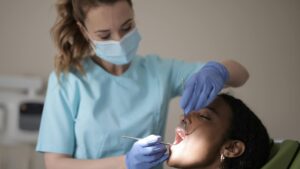
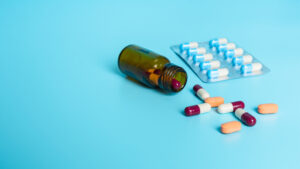
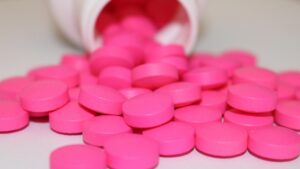

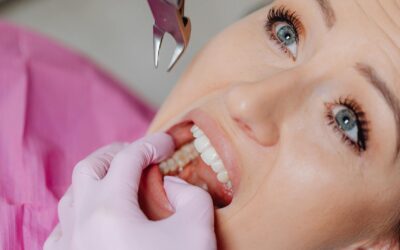

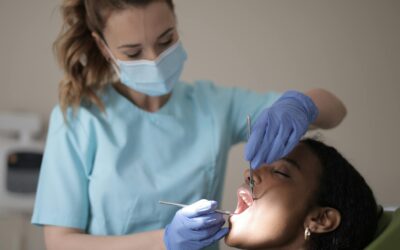
0 Comments